This Is the 1984 Corvette Reimagined by Italy
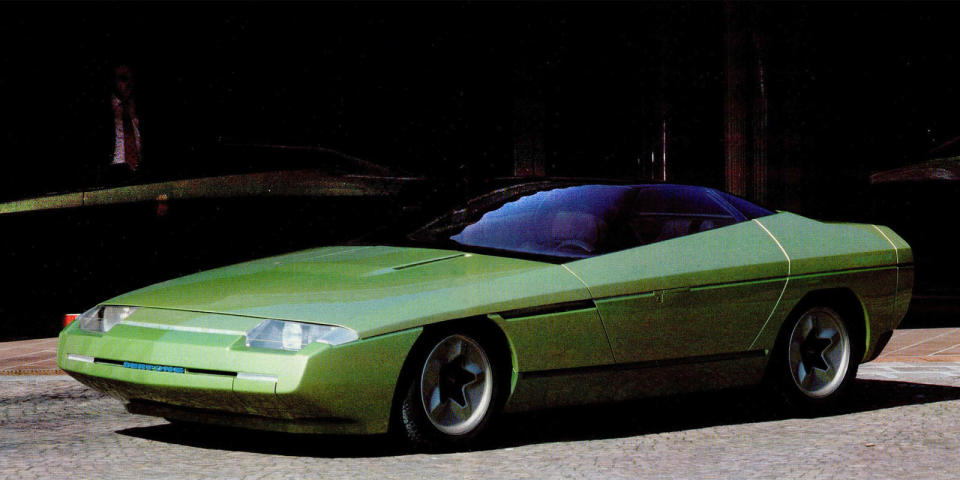
They had the tired, gray-eyed look of soldiers too long on guard duty. And yet the only guns involved were for spraying, soldering and gluing, along with welding torches, wrenches and. perhaps most important of all, the broad-face hammers of the metal shapers. Because of the pressing deadline some of the men hadn't slept more than a couple hours each night for the past week, and very little more in the three weeks before that. That's the way it is when Carrozzeria Bertone's workshops are rushing to complete a new prototype automobile. But as the process nears its end. what were once just ideas sketched on paper become a complete automobile and the hours become worth it. There will be plenty of time to sleep later-after the car has been photographed by R&T. tested in the wind tunnel, and finally put on an airplane to the U.S. for the car's international debut at the Los Angeles Auto Expo.
This newest Bertone show car is named Ramarro for a quick green lizard that inhabits the area around Bertone's design center in Turin's Valley di Susa, best known as the route Hannibal and his elephants took when they entered what is now Italy on their end run of Rome. Originally, the automotive Ramarro was to have been introduced at the Turin show in the spring of 1984, but owing to pressure from Fiat, the show was moved to November. After thinking it over, Nuccio Bertone decided to continue with the new car and unveil it in America, because that's where the chassis of the car came from in the first place-Bowling Green. Kentucky, home of the Chevrolet Corvette.
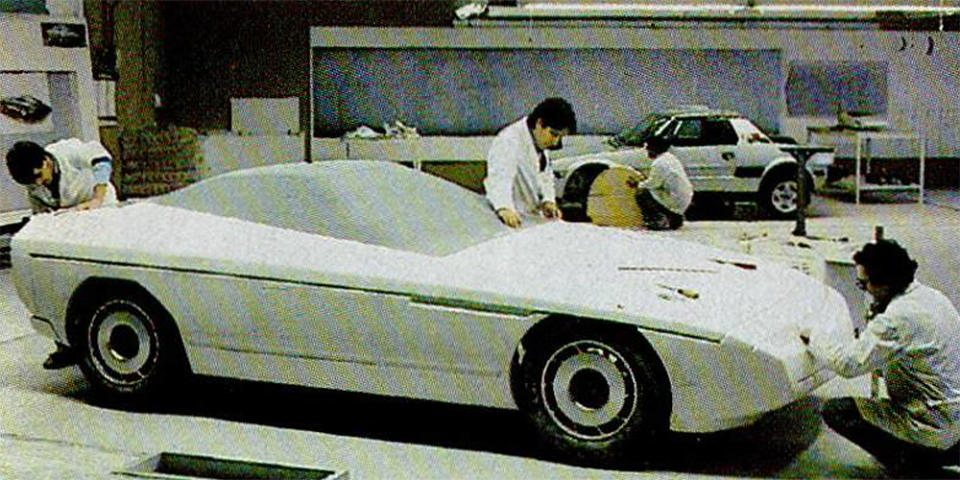
Why do a show car based on the new Corvette? For the challenge it presented. Bertone drove a stock Corvette around Turin for several days to get to know the car and sense the reaction to it. The Turinese loved the car just as it was. During those days the new Corvette also spent time in the courtyard outside the studio, visible to the designers. Initially they wondered what they could do to provide a new, fresh version of this well styled automobile, but after a period of frustration, a few ideas took shape on paper and the challenge of rebodying the Corvette took over. More concepts followed and the enthusiasm grew as a theme and shape began to develop.
Another reason for choosing the Chevrolet-built sports car was that the majority of the cars with Bertone bodies have been sold in America. And yet, until the recent reintroduction of the Xl/9, these cars carried the name of the automaker first and Bertone second. The design firm wanted to be able to show a car in America that was, first of all, a Bertone.

The Corvette chassis/drivetrain was left as is and the Ramarro has been finished as a completely streetable car. Only two basic changes were made, one being to replace the Goodyear tires with an experimental set from Michelin. These are exotic with an aspect ratio of 45, the rears being huge 280/45VR-17s and the fronts 240/45VR-17s. You'll see these tires next on the new Ferrari Berlinetta Boxer, to be introduced at the Turin show this fall. If you have a chance to see the Ramarro at Auto Expo, you'll notice the engine doesn't look like those in current production Corvettes. Though it hadn't been installed when I photographed the car, the new engine sent to Bertone by Chevrolet is a 1985 model port fuel injection version. This engine is just part of Chevrolet's involvement with the Ramarro, which began with the auto company giving Bertone a 1984 Corvette, specifically the one shown at the 1983 Geneva show when the new model was introduced to the European press.
With the Corvette already a "muscular" car, Bertone designers, led by Eugenio Pagliano and Marc Deschamps, began to look for ways to redefine that muscle, to slim it. Using the existing Corvette chassis and drivetrain dictated that the cowl area remain basically unchanged. For the sake of aerodynamics.
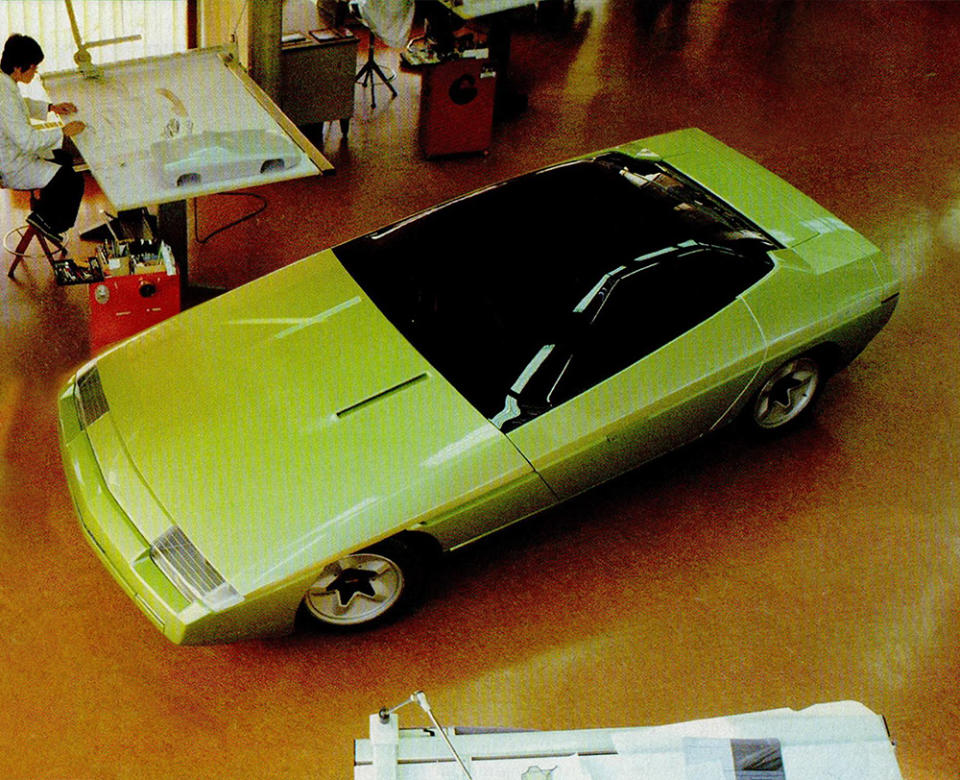
Bretone gave the Ramarro a very low nose, which they also wanted sealed as much as possible, taking in just enough air to give some flow around the engine. To achieve the low nose, the mini-spare tire was moved up front ahead of the engine, swap ping places with the radiator, which now resides at the very rear of the car. It's hoped the trip to the wind tunnel will prove that with the wedge shape, the low gentle roof and the short high tail, the airflow will remain attached to the body and then be sucked down into the air intake just behind the rear window. The cover over this intake is opened and closed electrically, and the air flow is aided by three electric fans. It's also meant that the low nose, high tail and fat tires should reflect some of the spirit of a Formula 1 car.
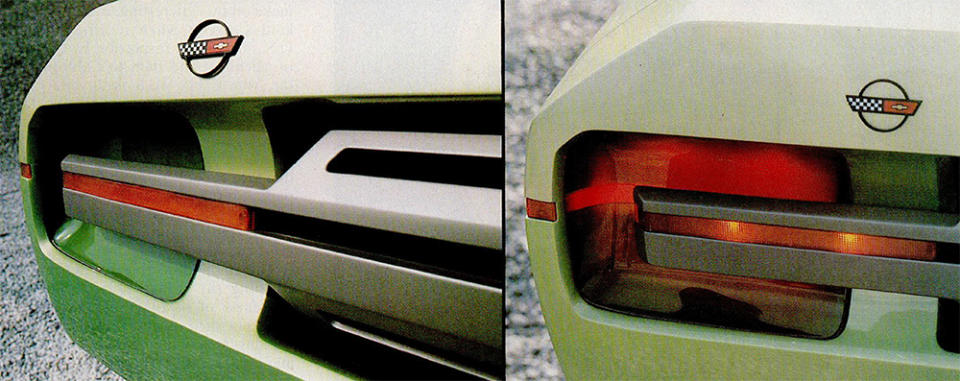
Show cars are meant for innovation, of course, and the Bertone Corvette's goes beyond its shape, tires and radiator placement. The production Corvette's doors are so long and their opening arc so wide that the designers decided to use a different system. Hence, the doors slide forward (shades of the Kaiser-Darrin). At first glance this system may appear to be just an adaptation of the door design used on many vans. The Ramarro doors, however, had to slide forward instead of back as in the vans, making it necessary to add structure up front to allow for this mechanism and weight. Next, the designers had to contend with door interference with the front tires when they are at full lock. So the doors had to be kept some distance from the body. The doors do provide one of the small problems with the design: limited outward side vision, especially poor for shorter drivers.
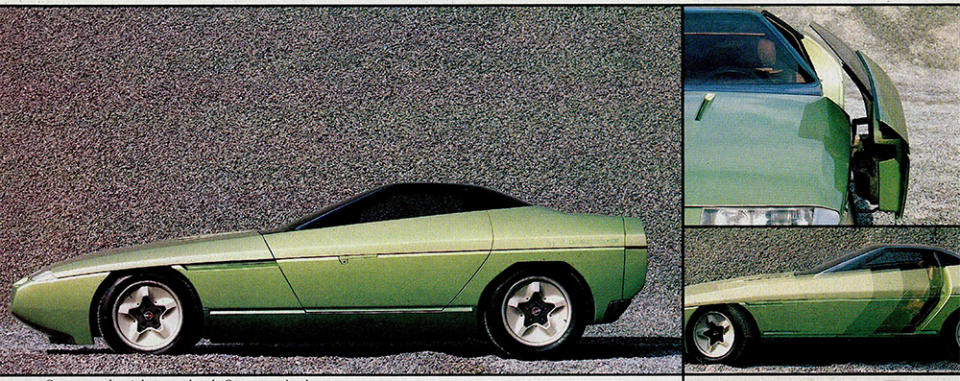
Once in the Ramarro, you'll find a few Corvette clues such as the stock digital instrument panel, the emergency brake handle on the left and the digital readout of the engine's condition. The latter has been relocated to a center console-mounted panel angled toward the driver. This panel also contains the heating/ air-conditioning controls and buttons for the window lifts, the rear-window defroster and the cover over the radiator air intake. In addition to a radio, the bottom of the panel features a large rotary-dial gear selector for the automatic transmission. The very simple, elegant dashboard is covered with green leather top and bottom, separated by black grillework that hides the instrument panel and the air vent.
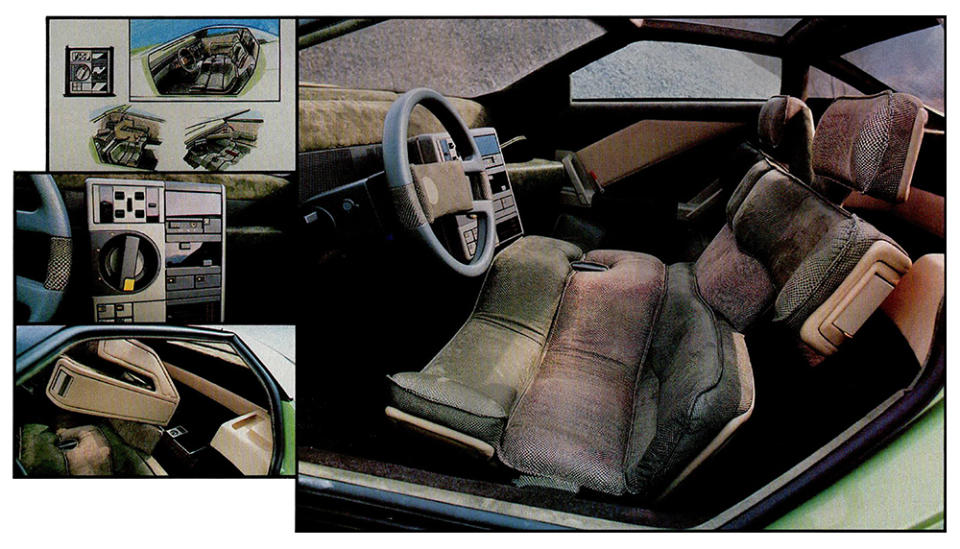
The sculpted seats in the Ramarro are not individually mounted but are connected by a sort of saddle with a rotary handle to provide fore-and-aft adjustment. The space behind the seats is the only area for luggage in this shortened Corvette and includes the two small lockable bins that are already in the production car. The top of each seatback folds forward so one can get to the luggage. Covering the seats is a green leather with a pattern meant to simulate the skin of the 4-legged Ramarro.
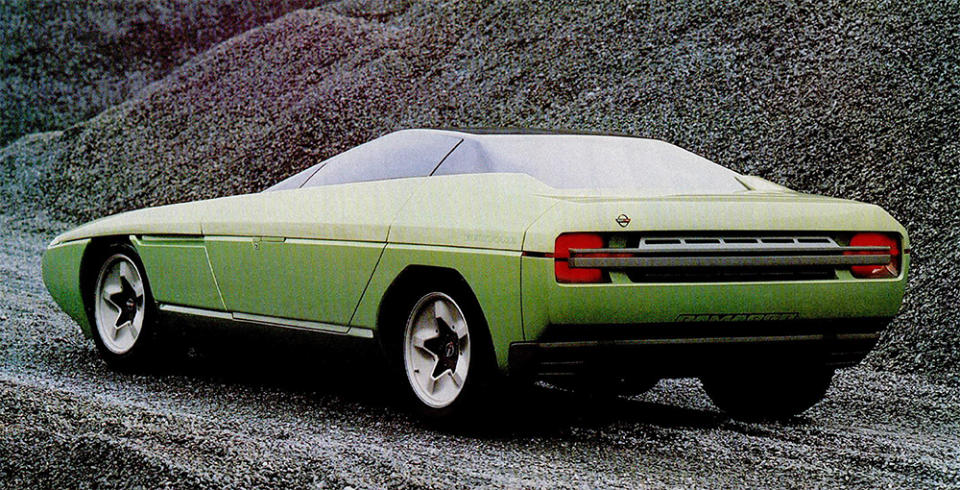
Those seats were the first thing to be added as the Bertone craftsmen rushed to finish the 4-wheel Ramarro. Pagliano and Deschamps were there throughout the entire process, pitching in to help. Bertone projects are like that, designers and crafts men together from the beginning. There are blueprints for many of the parts, of course, but the modelers turned the idea sketches directly into a clay model, suggesting a slight change here or there as they went. This designer-modeler relationship doesn't result in the friction one might expect; it's a sort of mutual admiration society that turns drawings into a working automobile. The entire Bertone work force was in full swing the night I arrived at the design center with as many as 10 of the 25 men in the shop working on the Corvette at one time-painters, metal workers, upholsterers and one man who was carefully mating the new electrics to the existing wiring harness. As you can see, they succeeded.
You Might Also Like

 Yahoo Autos
Yahoo Autos 